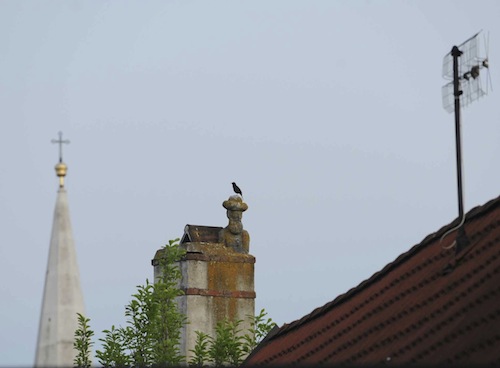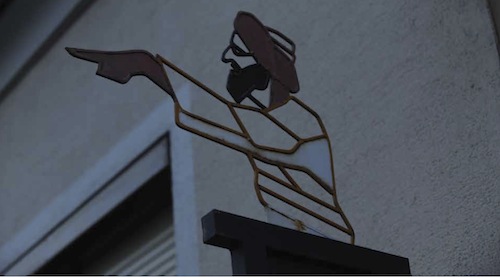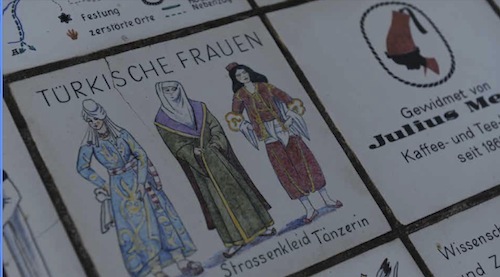Ostarrichislam -The Turk of Purbach
Catalogue: Ostarrichislam - Fragmente achthundertjähriger gemeinsamer Geschichte. Amena Shakir / Gernot Galib Stanfel / Martin M. Weinberger 2012 Vienna: Al Hamra
With a steeple in the background, modern television aerials to his side and a bird sitting on his head, the famous Turk of Purbach welcomes people looking for him. Legend has it that during the events on the occasion of the Turkish siege of the Hungarian fort Kőszeg (Güns) in 1532, an Ottoman soldier got drunk in a wine cellar and couldn't flee in time. Hidden inside a chimney he finally was detected, smoked out, converted and baptized. The new Christian then worked for the farmer whose wine he had drunk.
Being known for its traditional viniculture, the Purbach region really appreciates the touristic value of its bibulous Turk. For example, the sign of the neighbouring coffee house points to the Turk's head, places were named after him (e.g. Türkenhain, Zum Türken), parades and fancy-dress parties organized. Despite its basically positive orientation, however, the representation remains ambivalent and plays with stereotypes. Memories of Turkish heads impaled on chimneys have also stayed in mind of the surviving Turk of Purbach.
An interesting information board on the Turkish Wars near Purbach represents the exotic, transfigured, oriental world of women (harem woman and dancer). It was put up by the Viennese Coffee Company Julius Meinl, which placed its "Meinl Mohr" ("Meinl negro") logo right beside it. Generally, the German word Mohr was used pejoratively for African people, before becoming politically incorrect and prohibited, but in this particular case, the "Meinl Mohr" pays tribute to the Moors and, therefore, wears a Turkish fez on his head.


